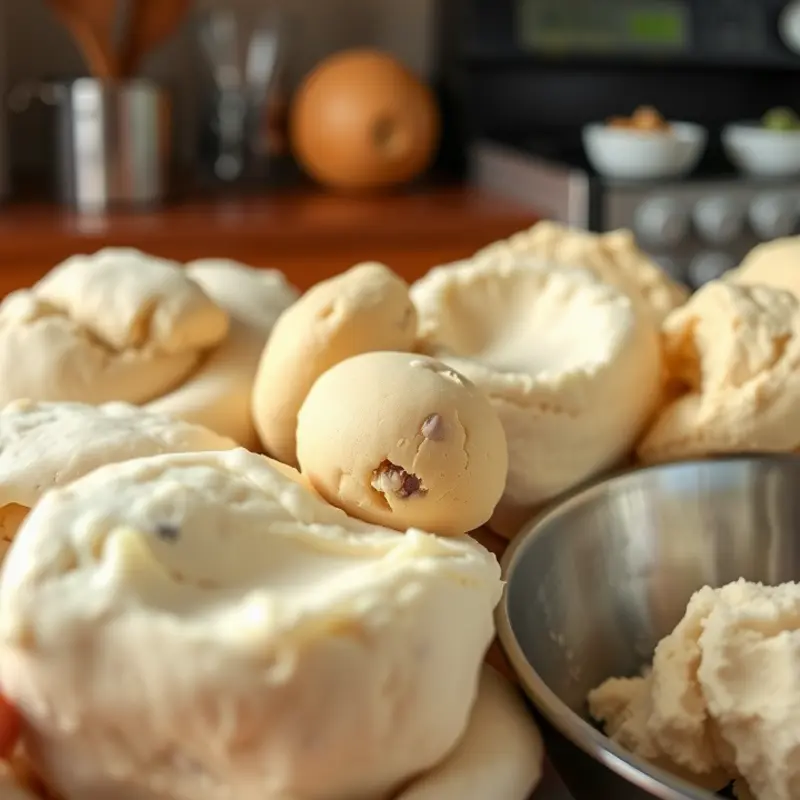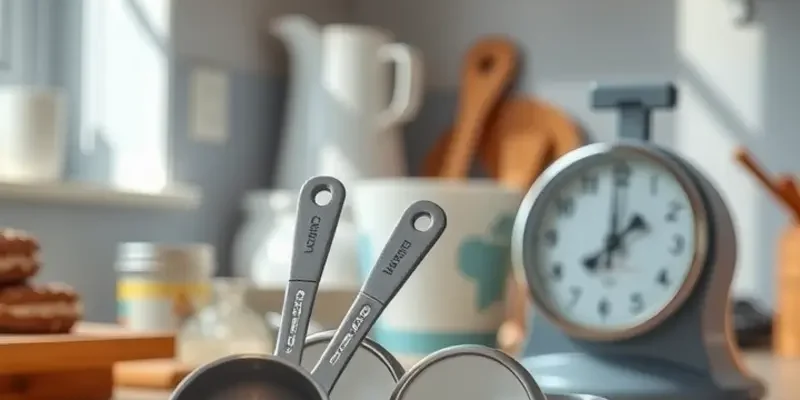Baking, an essential skill in the kitchen, offers a delightful way to explore flavors and textures. Whether you’re a novice or an experienced cook, enhancing your baking techniques can unlock a world of delicious possibilities. In the following chapters, you’ll discover fundamental methods that will help you create scrumptious baked goods with confidence. From understanding measurements to mastering dough and batter, these tips will encourage your culinary creativity while simplifying the baking process.
The Importance of Accurate Measurements

Accurate measurements in baking are akin to a musician tuning their instrument. Precision in mixing ingredients ensures that all components in a recipe work in harmony, producing a delectable end result. Baking is a scientific process, where a slight deviation can drastically alter the expected texture, rise, and flavor of the finished product. Therefore, understanding and mastering measurement techniques is crucial.
The difference between weigh and volume can be significant when accuracy is the goal. Weights tend to offer precision, especially with ingredients like flour. A cup of flour can weigh differently depending on how it’s packed, but a scale can eliminate this uncertainty. In contrast, volume measurements are practical for liquids, as their consistency doesn’t fluctuate. To measure correctly, always use the right tool for the right ingredient. Choose dry measuring cups for flour and sugar, while utilizing a liquid measuring cup with a spout for oils and milk.
For flour, fluff it up in the container before spooning it into your measuring cup, leveling it off with a straight edge. Scooping directly with the cup can compact the flour, causing excess. For sugar, cup measurement is usually straightforward; granulated and powdered varieties can be leveled easily. However, for a brown sugar that’s more moisture-heavy, ensure it’s packed into the measuring cup to account for air gaps.
Liquids require careful handling. Use a clear measuring cup with demarcated lines, and always eye-level the measurement for precision. Precision also applies to smaller measures. A baking recipe often calls for ingredients measured in teaspoons or tablespoons. Even slight overflows can disrupt the chemical balance. Consider complementing your measuring spoons with levelers to ensure exact quantities.
The correct measurement extends to more than just precision. It includes a deeper understanding and respect for the interactions between ingredients. This respect and attention to detail transform baking from a simple culinary task into a true craft. Master these measurement techniques, and you’ll create not just consistent and delicious baked goods, but a solid foundation to expand your culinary skills.
You can find more helpful information on baking techniques and the impact of measurement precision in other cooking tips, like speedy seafood prep, where accuracy also plays a significant role.
Understanding Dough and Batter Consistency

Achieving the perfect texture in your baked goods requires a nuanced understanding of dough and batter. The two are foundations in baking, each with unique properties and textures impacting the final product. Let’s explore what makes dough and batter distinct, and how to manipulate their consistencies to perfection.
Dough, typically used for bread, pastries, and some cookies, is thicker and more pliable. The main ingredients include flour, water, a leavening agent such as yeast or baking powder, and often a fat like butter or oil. The correct dough consistency should be neither sticky nor dry. For example, bread dough is ideally soft and smooth, providing elasticity. This Elasticity results from gluten development during kneading, which traps air bubbles for a perfect rise.
On the other hand, batter is more fluid, used in cakes, pancakes, and muffins. It blends flour, eggs, milk, sugar, and fat. The right batter should flow easily but still hold some shape in a bowl. Over-mixing can lead to gluten development, resulting in a tough texture, particularly undesirable in cakes.
Recognizing well-mixed dough or batter from its less desirable forms is crucial. For dough, over-mixing adds too much air, making it fragile and leading to dense baked goods. Under-mixed dough may result in uneven texture and flavor. A properly mixed dough is smooth and springs back when poked. Meanwhile, a well-mixed batter is homogenous, lump-free, and flows gently from a spoon.
Adjusting consistency is a skill every baker can refine. If dough is too sticky, gradually add flour to achieve desired pliability. If it is too dry, incorporate water or milk slowly until optimal moisture is achieved. For batter, extra fluid can be added carefully if overly thick, while excessive thinness can be remedied with additional flour—making sure to mix gently.
Mixing techniques also play a role in perfecting dough and batter. For doughs, use the heel of your hand to stretch and fold, activating gluten in yeast-leavened doughs. In pastry doughs, use a light hand to preserve flakiness. In contrast, batter requires less physical work. Techniques such as folding instead of stirring can help maintain a light, airy structure, crucial for cakes.
Kneading is essential for dough consistency, encouraging gluten formation. However, understanding the desired end texture of your baked product guides how and when to knead. More kneading builds structure for bread and pizza crusts. By contrast, less kneading yields tender pastries and shortbreads.
Experimenting with consistencies empowers you to customize textures. Try combining different flours with varying protein contents to see the impact on elasticity and tenderness in your doughs. With batters, experiment with different fats and sugars for diverse textures and flavor profiles.
For those looking to delve deeper into gluten-free baking, consider exploring this guide on utilizing non-dairy substitutes to refine batter consistency without traditional components.
Mastering dough and batter consistency transforms baking from a science into an art. Armed with knowledge and practice, you’ll craft perfectly textured baked goods every time.
Final words
Baking is as much about science as it is about art, and by mastering basic techniques, you enhance your ability to create tasty and visually appealing dishes. Accurate measurements lay the groundwork for successful baking, while understanding dough and batter consistency helps ensure your baked goods meet expectations. With practice and patience, anyone can develop their baking skills and create cherished recipes that will delight family and friends. Embrace your time in the kitchen without fear, and remember that every baking experience is an opportunity to learn and improve. Happy baking!







